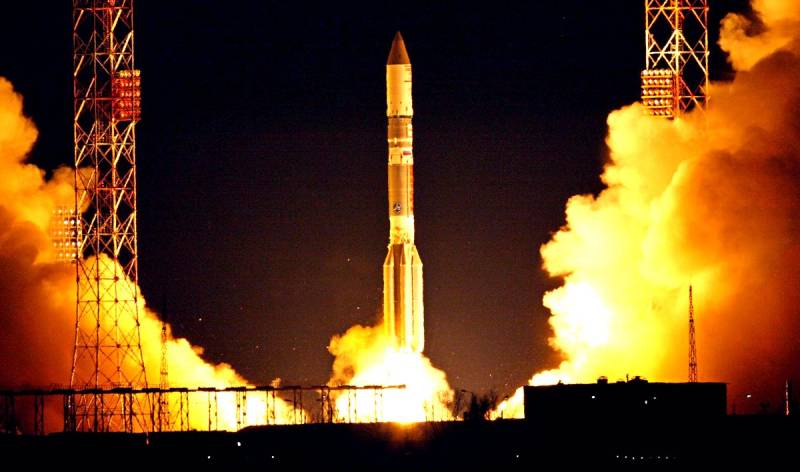Russian space buried early
Apparently, already in 2019, the Russian Federation will be the leader in the number of launches of space launch vehicles. At the beginning of 2018, 30 space launch vehicles launched from various cosmodromes. Russia carried out only four launches, while the United States and China completed nine launches.
Even 2017 looked more successful when Roscosmos carried out 20 successful launches from the cosmodromes in Baikonur and Plesetsk, as well as from the South American Guiana Space Center in Kourou (French Guiana).
This imbalance was the result of the delay caused by the high accident rate of the Proton missile. Therefore, by the beginning of 2018, Russia was not able to become one of the leaders in the number of launches. Now the country is trying to catch up in 2019. It is already known that the launch of the MLM module, which was previously planned for December 2019, was postponed for 2018.
In addition, in 2019 a cluster launch of the Kanopus-V No. 5, Kanopus-B No. 6 satellites on the Soyuz-2 rocket from Vostochny should take place. In 2019, plans for the OneWeb project will be implemented, which will require 14 launches of Soyuz-2-1B rockets with Frigate-M booster blocks.
Even 2017 looked more successful when Roscosmos carried out 20 successful launches from the cosmodromes in Baikonur and Plesetsk, as well as from the South American Guiana Space Center in Kourou (French Guiana).
This imbalance was the result of the delay caused by the high accident rate of the Proton missile. Therefore, by the beginning of 2018, Russia was not able to become one of the leaders in the number of launches. Now the country is trying to catch up in 2019. It is already known that the launch of the MLM module, which was previously planned for December 2019, was postponed for 2018.
In addition, in 2019 a cluster launch of the Kanopus-V No. 5, Kanopus-B No. 6 satellites on the Soyuz-2 rocket from Vostochny should take place. In 2019, plans for the OneWeb project will be implemented, which will require 14 launches of Soyuz-2-1B rockets with Frigate-M booster blocks.

Information